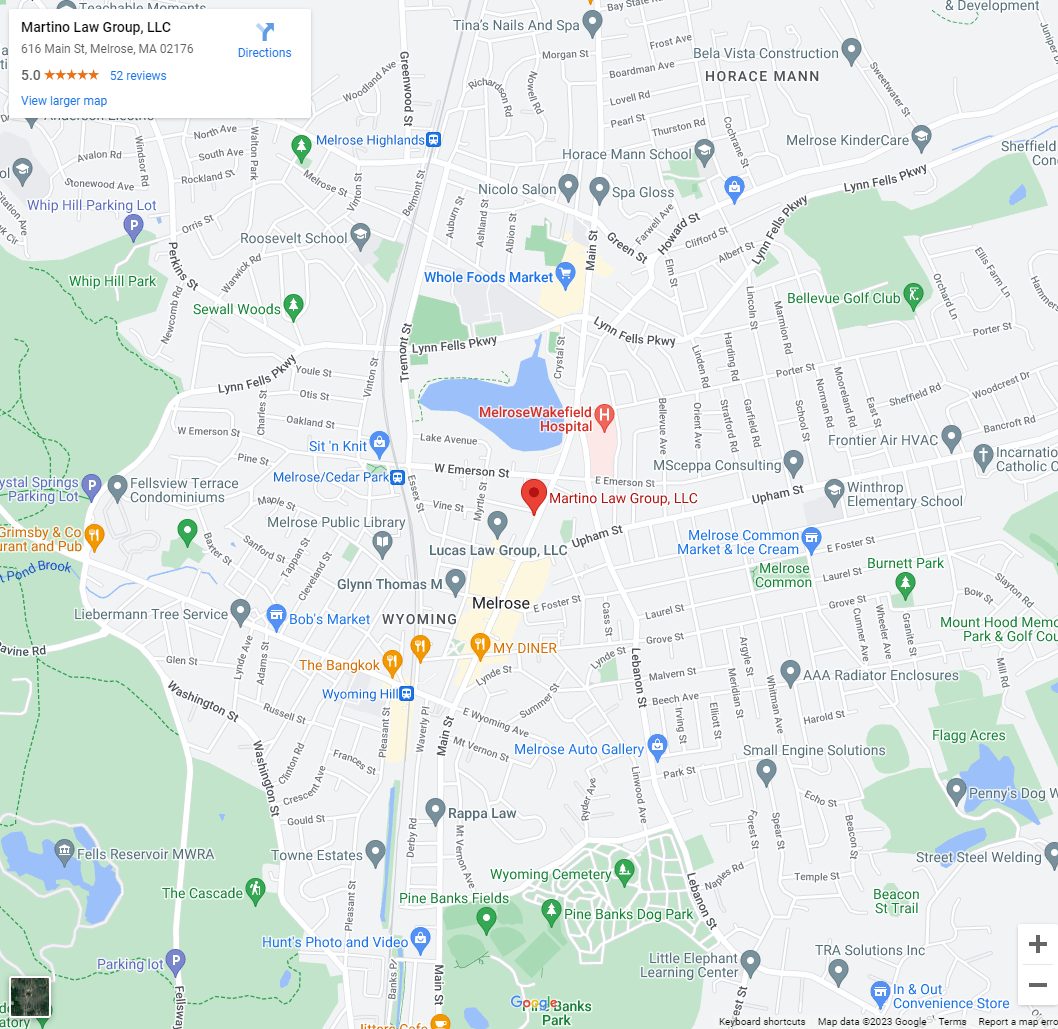Divorce can be an emotional and complex process. Massachusetts law permits couples to jointly file for divorce, which is often referred to as an “Uncontested Divorce” or “1A Divorce”. A Joint divorce simplifies the process. In an uncontested divorce, both spouses agree their marriage is “irretrievably broken “which means that there is not opportunity for reconciliation or repair to the marriage. The couple will still need to participate in specific statutorily required exchanges of information, however the process is expedited and together the couple presents the court with a separation agreement resolving all key issues like child custody, alimony, and dividing marital property. In order to file for a Joint Divorce, the couple must agree to the terms of their separation which makes the divorce get completed faster, cheaper, and will avoid a courtroom trial.
This guide will explain the process of how to file, and what is needed for a “Joint Divorce” or an “Uncontested Divorce” in Massachusetts.
What Is a “1A Divorce” in Massachusetts?
A “1A divorce” is commonly known as a “no-fault divorce”, or an “uncontested divorce”. Both spouses acknowledge that neither is at fault for the marriage’s breakdown and agree on all separation terms. An uncontested divorce eliminates the need for a trial but does require that both parties go before a judge for court approval of the terms of the divorce.
Why Choose an Uncontested Divorce?
Uncontested divorces are usually faster and cheaper than contested divorces, since the couple agrees on key issues, and the only court proceeding is a brief court hearing for approval of the agreement. These issues include child support, alimony, and property division.
Steps to Filing an Uncontested 1A Divorce in Massachusetts
Step 1: Determine Your Eligibility to File for Divorce in Massachusetts
You can file for divorce in Massachusetts if:
1. You’ve lived in the state for at least one year, or
2. The reason for the divorce (the “irretrievable breakdown”) occurred in Massachusetts, and you and your spouse have lived in the state together.
Where to File:
You will file your case in the Probate and Family Court in the county where you or your spouse live. For instance, if you’re based in Melrose, you’ll file in Middlesex Probate and Family Court. If your spouse lives in a different county, you may need to file there if it’s the last place you lived together.
Step 2: Exchange Financial Statements and Rule 410 Disclosures
Massachusetts statute requires that each spouse exchange specific financial information to ensure that the parties come to an agreement based on accurate information regarding the assets and debts of the marriage.
Step 3: Draft a Separation Agreement
A Separation Agreement is a key, binding contract. It sets the terms of your divorce. including decisions about:
– Division of marital assets (property, finances, etc.);
– Child custody and visitation rights;
– Child support; and
-Alimony or spousal support.
You and your spouse can draft this agreement yourselves, work with attorneys, or seek the help of a divorce mediator. Once finalized, both spouses must sign and notarize the agreement. You’ll need to decide whether the agreement will “merge” with the final divorce judgment (making it modifiable) or “survive” as a separate contract (making it harder to change in the future).
Pro tip: A lawyer can help ensure that your separation agreement protects your financial and parental interests and that the agreement includes all the required information a Court will want addressed in the agreement.
Step 4: Complete the Necessary Paperwork
Here’s a checklist of the required forms for a 1A divorce:
1. Certified copy of your marriage certificate,
2. Separation agreement,
3. Joint Petition for Divorce form (CJD-101A), signed by both spouses,
4. Affidavit of irretrievable breakdown,
5. Record of Absolute Divorce (R-408), and
6. Financial statements from both spouses.
Additional Forms for Couples with Children:
– Affidavit disclosing care or custody proceedings (OCAJ-1 TRC IV),
– Child Support Guidelines Worksheet (CJD-304), and
– Parent Education Program Certificate (unless waived by the court).
If you can’t afford the filing fees, you can file an Affidavit of Indigency to request a waiver.
Step 5: File Your Paperwork and Pay the Fees
You can file your paperwork in person or by mail at the Probate and Family Court. Along with your forms, you’ll need to pay the following fees:
– Divorce filing fee: $200
– Filing surcharge: $15
Step 6: Attend Your Court Hearing
Once your paperwork is filed, the Court will schedule a hearing. Both spouses must attend this unless the court grants a waiver for one party. During the hearing, the judge will review your separation agreement and ask questions to ensure that it’s fair and reasonable, and complies with Massachusetts law.
If everything is in order, the judge will approve the agreement, and your divorce will proceed to the next step: Judgment Nisi.
What Is a “Judgment Nisi”?
The Judgment Nisi is a 90-day waiting period after the judge approves your divorce. During this time, both spouses have an opportunity to change their minds or raise concerns about the fairness of the agreement. Once the Judgment Nisi period passes, your divorce will be finalized.
Important Note: You cannot remarry until 120 days after the Judgment Nisi is entered.
Why Work with an Attorney for a Joint Divorce?
A 1A Divorce is one of the simplest, easiest ways to end a marriage. However, your Separation Agreement can have lasting effects on your finances and family life. At Martino Law Group, LLC, our experienced attorneys are here to ensure that your agreement is fair, protects your rights, and secures your future.
If you’re considering a joint divorce, contact Martino Law Group today for a consultation. We’ll guide you through every step and help you achieve the best possible outcome for your case.
Call Martino Law Group, LLC at 781-0531-8673 or visit our website at www.martinolawgroup.com to get started.




